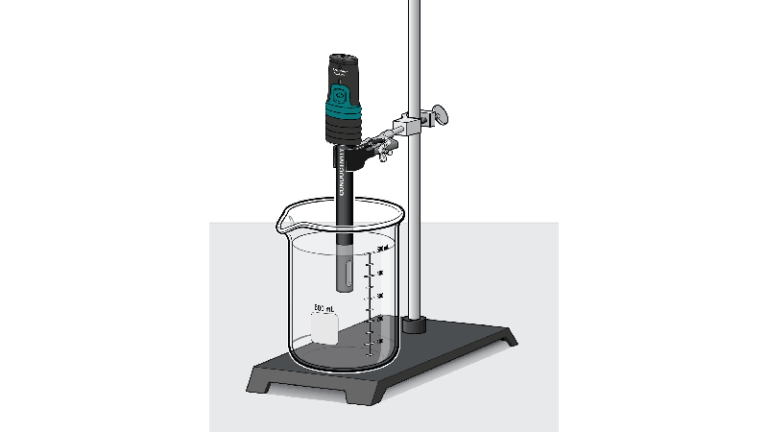Diffusion through Membranes
Experiment #3 from Agricultural Science with Vernier
- Subject
- Agricultural Science

Introduction
Diffusion is a process that allows ions or molecules to move from where they are more concentrated to where they are less concentrated. This process accounts for the movement of many small molecules across a cell membrane. Diffusion allows cells to acquire food and exchange waste products. Oxygen, for instance, might diffuse in pond water for use by fish and other aquatic animals. When animals use oxygen, more oxygen will diffuse to replace it from the neighboring environment. Waste products released by aquatic animals are diluted by diffusion and dispersed throughout the pond.
It is important to consider how the rate of diffusion of particles may be affected or altered.
- Diffusion may be affected by how steep the concentration gradient is. The direction that a diffusing molecule or ion might travel is random. While the particles are diffusing, is there a net movement from where they are concentrated to where they are less concentrated?
- Diffusion may be affected by other different, neighboring particles. For instance, if oxygen diffuses towards a single-celled pond organism at a certain rate, will that rate be altered by the presence of another type of molecule? Would the presence of other molecules block or enhance the diffusion of a molecule? Would the molecule’s rate be independent of particles that do not alter the concentration gradient?
One way to measure the rate of diffusion of ions is to monitor their concentration in solution over a period of time. Since ions are electrically charged, water solutions containing ions will conduct electricity. A conductivity probe measures the concentration of ions in a solution, but not the concentration of electrically neutral molecules. Salts, such as sodium chloride, produce ions when they dissolve in water. If you place a salt solution inside a selectively permeable membrane such as dialysis tubing, the salt ions can diffuse out of the tubing and into the surrounding water.
Objectives
- Use a conductivity probe to measure the ionic concentration of various solutions.
- Study the effect of concentration gradients on the rate of diffusion.
- Determine if the diffusion rate for a molecule is affected by the presence of a second molecule.
Sensors and Equipment
This experiment features the following sensors and equipment. Additional equipment may be required.
Option 1

Option 2

Ready to Experiment?
Ask an Expert
Get answers to your questions about how to teach this experiment with our support team.
- Call toll-free: 888-837-6437
- Chat with Us
- Email support@vernier.com
Purchase the Lab Book
This experiment is #3 of Agricultural Science with Vernier. The experiment in the book includes student instructions as well as instructor information for set up, helpful hints, and sample graphs and data.

